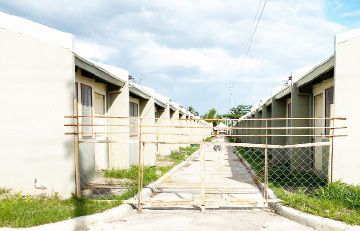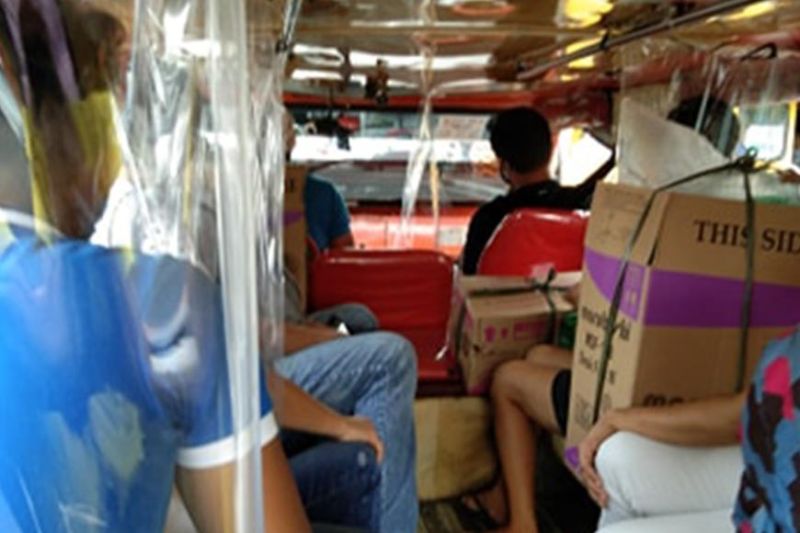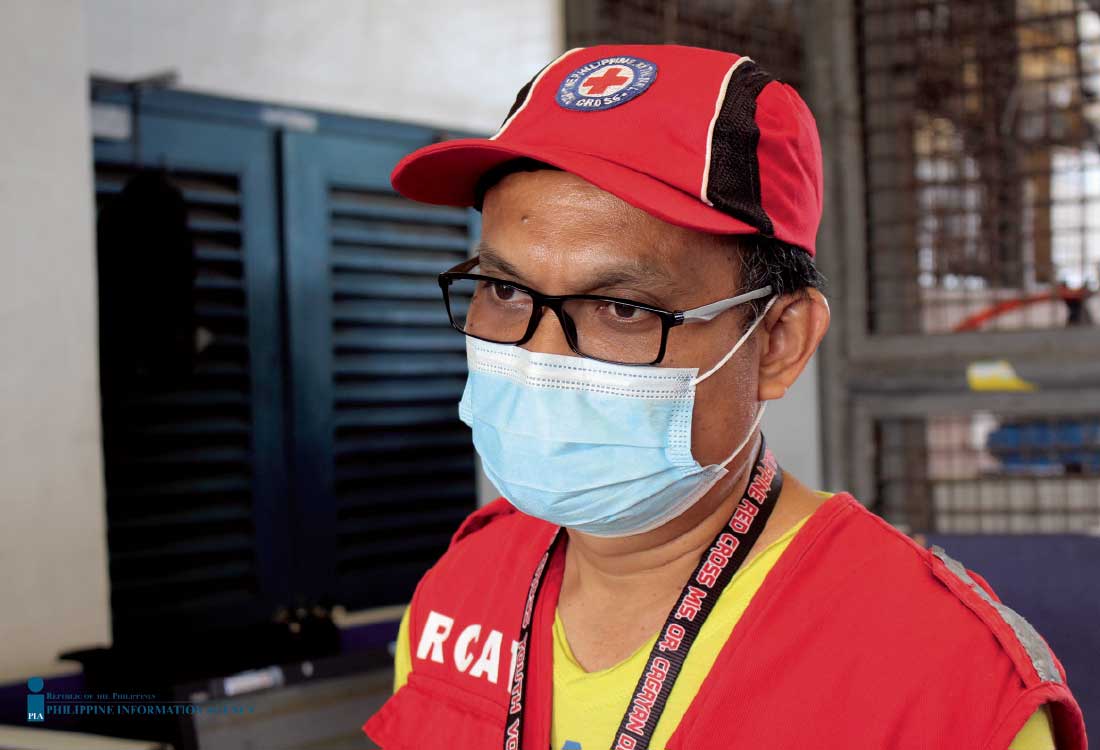(Part 2 of the four-day journey from Metro Manila to Dumaguete. [Click here to read Part 1] The author had a trouble-free trip from Quezon City through Batangas, Mindoro, Caticlan and Kalibo in the province of Aklan, the province of Capiz, upto Dumangas in the province of Iloilo. He was required to report for quarantine in Negros Occidental.)
BACOLOD CITY — On my way to the Provincial Health Office, I was directed instead to proceed to the Healing Center in the town of EB Magalona. I soon found myself in a dated but unused subdivision, built in the midst of a sugarcane field.
The gate was guarded by policemen. “Oh, you’re that media guy,” one guard said, and he allowed me in. I was then led to a covered court, where other Persons under Monitoring were getting their swab test. The nurse only got my name and other details.
Instead of getting swabbed and rapid-tested, I was surprised to learn that I was to be interned in quarantine at this Healing Center for the next 14 days!

I was led to my own space – a rawhouse, they call it, where there was no ceiling, no tiles on the sink, floor or toilet, a toilet bowl with no water closet. It was the basic of basics. Surprisingly, it still looked new as it had been unoccupied since its completion for Supertyphoon Yolanda survivors. I was to be its first occupant.
It had a vinyl mat on the floor, a fan, table, a folding bed with a pillow and blanket, screened windows, and a 20-liter jug of water. “This will be your home for the next 14 days,” the nurse said.
In a sense, I was thankful that if I were to spend time in quarantine, it would be in a house like this, no matter how basic. I had seen pictures of other quarantine facilities in other places where the beds, lined up in a basketball court, were separated only by plywood dividers, making it look more like a makeshift hospital.
I suggested to the nurse that if I had to live here for two weeks in this facility, I could probably drive first to a grocery store to buy some snacks or other things that would make the accommodations more comfortable. I had actually set my eyes on a beautiful lounging chair by the roadside, close to the quarantine facility.
“Sorry, Sir, but once you are recorded as having entered, you cannot go out anymore until you’ve completed your quarantine,” one of the camp administrators told me.
Welcome to the Hotel California, I told myself, “where you can check in anytime you like but you can never leave”.

I just consoled myself with the thought that at least, we had free water — although I had been warned that the reddish water from the faucet, and the shower smelled of water from a deep well. That meant I couldn’t use it to wash my clothes. I figured I could get by without doing laundry for the next 14 days. I had, after all, three suitcases of clothes in the car.
And we had free electricity. So I unloaded from the car my Keurig coffee maker (complete with a 110 voltage regulator), oven toaster, TV set, my broadband internet device, my suitcases, my wall clock, and other boxes that contained food, and a million other things.
“Wow,” exclaimed the compound cleaner, “you came prepared!”
“Lipat bahay,” I replied.
The sun was setting, and my neighbors were chatting on the empty and narrow subdivision roads. I went to say hello. They were all Ilonggos. They had come from other provinces (some from other countries), and were returning to their homes in Negros Occidental.
Some told me excitedly they had four more days to go before being sent home. The others said they had been quarantined there the last eight days. “Six more days and we’re out of here!” they said.
We all knew we were there for health reasons, and we half-heartedly accepted our fate. But truth to tell, it was the closest experience I ever had to jail life, although on a much more comfortable level.
“Look at this quarantine period as a Holy Week retreat you didn’t really get to observe. God works in mysterious ways,” a friend messaged me.
Life was boring, my neighbors said, especially that Globe had almost no Internet service there. “But food is free!,” they chorused.
Thankfully, my Smart Iphone, when placed by the window, gave me three bars of LTE Internet signal, where I had a download speed of 20 mbps and upload speed of 1.5 mbps – more than ‘good enough’.
That first night at the facility, I lay in bed thinking it was probably a good idea to have heeded Vice Governor Macias’ advice to first call Dr. Liland Estacion of the Negros Oriental CoViD Task Force. (even as I was just passing through Occidental.)
Having come from Quezon City was definitely making me a social pariah. People — especially medical frontliners — had reservations about even talking with me, unless they were well protected behind their masks.
But on the other hand, what I could not reconcile was that the national policy for areas under Enhanced Community Quarantine classified the media as a frontline service, and its employees as “Authorized Persons Outside of Residence” duly certified by the National Inter-Agency Task Force; and I was given the RapidPass, which was supposed to be honored at all quarantine checkpoints.
The same directive also provided that government agencies like my office (People’s Television) are only required to issue accreditation, office orders, and travel orders to identify their respective skeleton workforces for critical services operations for the duration of the ECQ.
Even IDs issued by my company are deemed “sufficient for movement” within the ECQ areas.
Friday, the following day, I called Carla Gomez, editor-in-chief of the Visayan Daily Star in Bacolod, who was surprised to learn of my story. She suggested that I get someone to bring my plight to the Provincial leadership, get me out of quarantine in Occidental, so I could instead comply with the health protocols in my own Province.
Carla also did her calls, and discovered that there had been a lot of miscommunication going on. “They thought you were the one who wanted to be quarantined in EB Magalona, and that you went there on your own free will — that’s why they got you in!”
After a few hours, I was informed that Negros Occidental was willing to issue me an ECQ border pass that will allow me to leave Negros Occidental anytime between May 1 to 4.
Then things happened so fast. A nurse came to my room to say I was to go get my swab and rapid test that very minute. My Rapid Diagnostic Test (RDT), which came out in 10 minutes, was a Negative.
I spent that entire afternoon loading all my stuff back into the car. By 6 p.m., my travel documents from Negros Occidental arrived. I felt like a million bucks!
My car revved to a start at 6:30 p.m., and I was out of there in no time. I just stopped to send messages of thanks to all who helped me along the way. It felt so good to be out after 24 hours in confinement.
So I drove south into the night, passing through the dark and deserted highway straight to Kabankalan, and entering Negros Oriental via the mountain town of Mabinay at 9:30 p.m.
Normally, we take for granted these geographical borders, but this time, every kilometer that I travelled was adding to the excitement. Dumaguete still was a good two hours away, but being familiar with these roads made the journey shorter.
Meanwhile, Irma was preparing a room for me, which was actually built last year for a B&B.
I finally reached home at 11 p.m. What a journey!
Straight to the quarantine room I went, while Irma spent the next few hours, lasting ‘til dawn, unloading all my stuff, and putting them in the yard for cleaning and disinfection.
I then reported to the Barangay Health Center to inform of my arrival — who said they had been expecting me (word travels fast in Dumaguete)!
After getting my vital information, the City nurse and a Barangay Councilor came with me to the house to check my “quarantine facility”. It passed.
That afternoon, I had another set of visitors: City Health Officer Dr. Sarah Talla herself, Piapi Barangay Capt. Charlie Bantilan, a City Health nurse, and a policewoman. I was told they would have gone tracking me down had I not reported to the Barangay. (Whew!) We discussed my circumstances, and the quarantine process: I was to keep my mask on, even inside the house. I had to eat in a separate dining area (in the garden at the back), using my own utensils. I had to avoid any contact with my family members. I had to report to them my body temp and BP two times each day.
Fourteen days seem so long to be confined in any facility. But thankfully, today’s technology ensures we can be in touch with the rest of the family, and the world, even while doing time. And I can’t thank Netflix enough.
While in quarantine, I learned that I also tested negative for the confirmatory RT-PCR (often called the Swab) test.
Friday the 15th finally came. “Congratulations and thanks for the cooperation!” came a text message from the City Health nurse, as I was watching Braveheart. “Freedom!” The triumphant cry of the Scottish freedom fighter (Mel Gibson) never sounded as real.
Now I can say I am truly home.
On May 11, some 10 days after I had returned here, the Negros Oriental Inter-Agency Task Force on Emerging Infectious Diseases came up with guidelines for returning Negrenses:
Those coming from areas with Covid-19 cases, 1) a certificate of quarantine from the Rural Health Unit/City Health Unit; 2) Rapid Diagnostic Test with a negative result; 3) certificate of good health and fit to travel from RHU/CHU; 4) certificate of acceptance from their home LGU with conformé from the returning resident for a mandatory quarantine in an LGU facility upon return; and 5) LGU vehicle to fetch them from the border, seaport, or airport by the home-province.
For those coming from areas with no Covid-19 cases, 1) certificate of Quarantine from RHU/CHU; health certificate from RHU/CHU; 2) certification of no Covid-19 case from RHU/CHU; 3) certificate of acceptance from their home-LGU with conformé from the returning resident for a mandatory quarantine in an LGU facility upon return; and 4) LGU vehicle to fetch them from the border, sea port, or airport by the home-province.
On May 13, the National IATF EID also issued more requirements, which are found in its Operational Guidelines on the Management of Locally- Stranded Individuals (to include foreign nationals).
If you have been stranded in the Philippines, and intend to return home this time during CoViD via the Eastern Nautical Highway and the roll on-roll off vessels, I simply suggest that you abandon the idea, and stay where you are until travel restrictions have eased. (Alex Rey Pal)
























